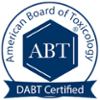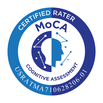Movement Disorders: Parkinson's Disease v. Parkinsonism
Parkinson's disease is an idiopathic progressive neurodegenerative movement disorder characterized clinically by tremor and slowness of movement. By contrast, parkinsonism is a neurological disorder that resembles Parkinson's disease but which may or may not be progressive. Parkinson's disease responds well to dopaminergic replacement therapy whereas parkinsonism does not. Parkinsonism has been associated with exposure to neurotoxicants (e.g., manganese) (Ratner and Fitzgerald, 2017). Recent studies suggest that manganese promotes the aggregation and prion-like cell-to-cell exosomal transmission of α-synuclein which is implicated in Parkinson's disease. Welders exposed to manganese were found to have increased misfolded α-synuclein in their serum exosomes (Harischandra et al., 2019). Gamache and colleagues (2019) observed that exposure to pesticides and toxic metals from welding are both associated with an earlier onset of Parkinson's disease. This effect was greater with higher levels of exposure, both in terms of frequency and proximity (Gamache et al., 2019). The research by Gamache and colleagues is very important because it both confirms and expands upon the earlier findings of my colleagues and I who observed a younger age at onset of sporadic Parkinson's disease among subjects occupationally exposed to metals and pesticides (Ratner et al., 2015).
Dementias: Alzheimer's Disease v. Toxic Encephalopathy
Alzheimer's disease is a form of dementia. Alzheimer's disease is an idiopathic progressive neurodegenerative disease characterized by memory deficits and a unique neuropathology. Selective vulnerability of hippocampal neurons to oxidative stress has been implicated in Alzheimer's disease (for review see Wang and Michaelis, 2010). Chemicals that increase neuronal activity by enhancing excitatory or reducing inhibitory neurotransmission may promote the progression of the neuropathological processes implicated in the pathogenesis of Alzheimer's disease (Wu et al., 2016). The interactions between neurotoxicant exposue and Alzheimer's disease can be synergistic or additive (Heinemann et al., 2016).
By contrast, toxic encephalopathy is a neurological disorder that resembles Alzheimer's disease clinically except that it typically is not progressive. Toxic encephalopathy has been associated with exposure to neurotoxicants (e.g., toluene) (Feldman et al., 1999). Toxic encephalopathy can follow serve acute exposures or emerge insidiously with chronic exposures. The severity of toxic encephalopathy is typically dose dependent.
Motor Neuron Diseases: Amyotrophic Lateral Sclerosis v. Toxic Neuropathy
Amyotrophic Lateral Sclerosis is an idiopathic progressive neurodegenerative motor neuron disease characterized clinically by muscle atrophy and weakness. By contrast, toxic neuropathy is a neurological disorder that resembles Amyotrophic Lateral Sclerosis except that it is typically not progressive. Toxic neuropathy may be confined to the peripheral nerves or may be associated with central nervous system dysfunction as well. Toxic neuropathy has been associated with exposure to neurotoxicants found in the workplace (e.g., organophosphate insecticides and n-hexane) and with chemotherapy agents (e.g., cisplatin). Cisplatin has also been shown to promote tauopathy in the central nervous system (Chiang et al., 2019).
References:
Chiang ACA, Huo X, Kavelaars A, Heijnen CJ. (2019) Chemotherapy accelerates age-related development of tauopathy and results in loss of synaptic integrity and cognitive impairment. Brain Behav Immun. S0889-1591(18)31197-8. doi: 10.1016/j.bbi.2019.04.005.
Feldman RG, Ratner MH, Ptak T: (1999) Chronic toxic encephalopathy in a painter exposed to mixed solvents. Environ Health Perspect. 107(5):417-422.
Gamache PL, Haj Salem I, Roux-Dubois N, Le Bouthillier J, Gan-Or Z, Dupré N. Exposure to Pesticides and Welding Hastens the Age-at-Onset of Parkinson's Disease. Can J Neurol Sci. 2019 Jul 25:1-6.
Harischandra DS, Rokad D, Neal ML, Ghaisas S, Manne S, Sarkar S, Panicker N, Zenitsky G, Jin H, Lewis M, Huang X, Anantharam V, Kanthasamy A, Kanthasamy AG. (2019) Manganese promotes the aggregation and prion-like cell-to-cell exosomal transmission of α-synuclein. Sci Signal. 12(572). doi: 10.1126/scisignal.aau4543.
Heinemann SD, Posimo JM, Mason DM, Hutchison DF, Leak RK. (2016) Synergistic stress exacerbation in hippocampal neurons: Evidence favoring the dual-hit hypothesis of neurodegeneration. Hippocampus. 26(8):980-94.
Ratner MH, Farb DH, Ozer JS, Feldman, RG, Durso R: (2014) Younger age at onset of sporadic Parkinson’s disease among subjects occupationally exposed to metals and pesticides. Interdisciplinary Toxicology. 7(3):123–133.
Ratner MH, Fitzgerald E. (2017) Understanding of the role of manganese in parkinsonism and Parkinson disease. Neurology 88(4):338-339.
Wang X, Michaelis EK. (2010) Selective neuronal vulnerability to oxidative stress in the brain. Front Aging Neurosci.30;2:12.
Wu JW, Hussaini SA, Bastille IM, Rodriguez GA, Mrejeru A, Rilett K, Sanders DW, Cook C, Fu H, Boonen RA, Herman M, Nahmani E, Emrani S, Figueroa YH, Diamond MI, Clelland CL, Wray S, Duff KE. (2016) Neuronal activity enhances tau propagation and tau pathology in vivo. Nat Neurosci. 19(8):1085-92.
Last update: June 9, 2024
Parkinson's disease is an idiopathic progressive neurodegenerative movement disorder characterized clinically by tremor and slowness of movement. By contrast, parkinsonism is a neurological disorder that resembles Parkinson's disease but which may or may not be progressive. Parkinson's disease responds well to dopaminergic replacement therapy whereas parkinsonism does not. Parkinsonism has been associated with exposure to neurotoxicants (e.g., manganese) (Ratner and Fitzgerald, 2017). Recent studies suggest that manganese promotes the aggregation and prion-like cell-to-cell exosomal transmission of α-synuclein which is implicated in Parkinson's disease. Welders exposed to manganese were found to have increased misfolded α-synuclein in their serum exosomes (Harischandra et al., 2019). Gamache and colleagues (2019) observed that exposure to pesticides and toxic metals from welding are both associated with an earlier onset of Parkinson's disease. This effect was greater with higher levels of exposure, both in terms of frequency and proximity (Gamache et al., 2019). The research by Gamache and colleagues is very important because it both confirms and expands upon the earlier findings of my colleagues and I who observed a younger age at onset of sporadic Parkinson's disease among subjects occupationally exposed to metals and pesticides (Ratner et al., 2015).
Dementias: Alzheimer's Disease v. Toxic Encephalopathy
Alzheimer's disease is a form of dementia. Alzheimer's disease is an idiopathic progressive neurodegenerative disease characterized by memory deficits and a unique neuropathology. Selective vulnerability of hippocampal neurons to oxidative stress has been implicated in Alzheimer's disease (for review see Wang and Michaelis, 2010). Chemicals that increase neuronal activity by enhancing excitatory or reducing inhibitory neurotransmission may promote the progression of the neuropathological processes implicated in the pathogenesis of Alzheimer's disease (Wu et al., 2016). The interactions between neurotoxicant exposue and Alzheimer's disease can be synergistic or additive (Heinemann et al., 2016).
By contrast, toxic encephalopathy is a neurological disorder that resembles Alzheimer's disease clinically except that it typically is not progressive. Toxic encephalopathy has been associated with exposure to neurotoxicants (e.g., toluene) (Feldman et al., 1999). Toxic encephalopathy can follow serve acute exposures or emerge insidiously with chronic exposures. The severity of toxic encephalopathy is typically dose dependent.
Motor Neuron Diseases: Amyotrophic Lateral Sclerosis v. Toxic Neuropathy
Amyotrophic Lateral Sclerosis is an idiopathic progressive neurodegenerative motor neuron disease characterized clinically by muscle atrophy and weakness. By contrast, toxic neuropathy is a neurological disorder that resembles Amyotrophic Lateral Sclerosis except that it is typically not progressive. Toxic neuropathy may be confined to the peripheral nerves or may be associated with central nervous system dysfunction as well. Toxic neuropathy has been associated with exposure to neurotoxicants found in the workplace (e.g., organophosphate insecticides and n-hexane) and with chemotherapy agents (e.g., cisplatin). Cisplatin has also been shown to promote tauopathy in the central nervous system (Chiang et al., 2019).
References:
Chiang ACA, Huo X, Kavelaars A, Heijnen CJ. (2019) Chemotherapy accelerates age-related development of tauopathy and results in loss of synaptic integrity and cognitive impairment. Brain Behav Immun. S0889-1591(18)31197-8. doi: 10.1016/j.bbi.2019.04.005.
Feldman RG, Ratner MH, Ptak T: (1999) Chronic toxic encephalopathy in a painter exposed to mixed solvents. Environ Health Perspect. 107(5):417-422.
Gamache PL, Haj Salem I, Roux-Dubois N, Le Bouthillier J, Gan-Or Z, Dupré N. Exposure to Pesticides and Welding Hastens the Age-at-Onset of Parkinson's Disease. Can J Neurol Sci. 2019 Jul 25:1-6.
Harischandra DS, Rokad D, Neal ML, Ghaisas S, Manne S, Sarkar S, Panicker N, Zenitsky G, Jin H, Lewis M, Huang X, Anantharam V, Kanthasamy A, Kanthasamy AG. (2019) Manganese promotes the aggregation and prion-like cell-to-cell exosomal transmission of α-synuclein. Sci Signal. 12(572). doi: 10.1126/scisignal.aau4543.
Heinemann SD, Posimo JM, Mason DM, Hutchison DF, Leak RK. (2016) Synergistic stress exacerbation in hippocampal neurons: Evidence favoring the dual-hit hypothesis of neurodegeneration. Hippocampus. 26(8):980-94.
Ratner MH, Farb DH, Ozer JS, Feldman, RG, Durso R: (2014) Younger age at onset of sporadic Parkinson’s disease among subjects occupationally exposed to metals and pesticides. Interdisciplinary Toxicology. 7(3):123–133.
Ratner MH, Fitzgerald E. (2017) Understanding of the role of manganese in parkinsonism and Parkinson disease. Neurology 88(4):338-339.
Wang X, Michaelis EK. (2010) Selective neuronal vulnerability to oxidative stress in the brain. Front Aging Neurosci.30;2:12.
Wu JW, Hussaini SA, Bastille IM, Rodriguez GA, Mrejeru A, Rilett K, Sanders DW, Cook C, Fu H, Boonen RA, Herman M, Nahmani E, Emrani S, Figueroa YH, Diamond MI, Clelland CL, Wray S, Duff KE. (2016) Neuronal activity enhances tau propagation and tau pathology in vivo. Nat Neurosci. 19(8):1085-92.
Last update: June 9, 2024

